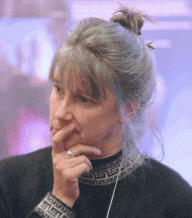|
|
|
|
|
|
|
News & Views item - December 2008 |
![]() A Tale
of Two US Presidents and Their Response to Scientific Policy Advice.
(December 1, 2008)
A Tale
of Two US Presidents and Their Response to Scientific Policy Advice.
(December 1, 2008)
 Professor
Penny Sackett ascended to the post of Australian Chief Scientist just under one
month ago. Understandably, outside of making a public comment on the return to
Victoria of the remains of the Great Melbourne Telescope (it had been housed at
Mt Stromlo since 1944) which was all but destroyed by the 2003 Canberra
bushfire, the ANU astronomer has been working below media scrutiny sequestered
within the confines of the Department of Innovation, Industry, Science and
Research.
Professor
Penny Sackett ascended to the post of Australian Chief Scientist just under one
month ago. Understandably, outside of making a public comment on the return to
Victoria of the remains of the Great Melbourne Telescope (it had been housed at
Mt Stromlo since 1944) which was all but destroyed by the 2003 Canberra
bushfire, the ANU astronomer has been working below media scrutiny sequestered
within the confines of the Department of Innovation, Industry, Science and
Research.
A recent review by Gregory Good of a book by Zuoyue Wang, In Sputnik's Shadow, might give Professor Sackett pause. Here are the first two paragraphs:
Consider a tale of two United States presidents and their approaches to science policy advice. The first preferred advisers who honestly disagreed with him and with each other, but who advised him with the best interests of the country at heart. The second preferred advisers who told him what he wanted to hear. The first preferred advisers who were skeptical of technological fixes; the second, advisers who thought technology could answer most challenges. The first preferred advisers with backgrounds in academia; the second, advisers from industry. The first president doubted the advice of ideologues and religionists; the second used their advice to form science policy on issue after issue. The first respected free and open debate; the second formed policy behind closed doors and presented carefully censored reports to the public.
The second U.S. president above is clearly George W. Bush. Readers may be
surprised, however, to find that the first is General Dwight David Eisenhower,
who in 1957 established the President's Science Advisory Committee (PSAC).
Now after four weeks in the job has the Chief Scientist had a chance to stop in to have a chat with Prime Minister Rudd regarding science policy?